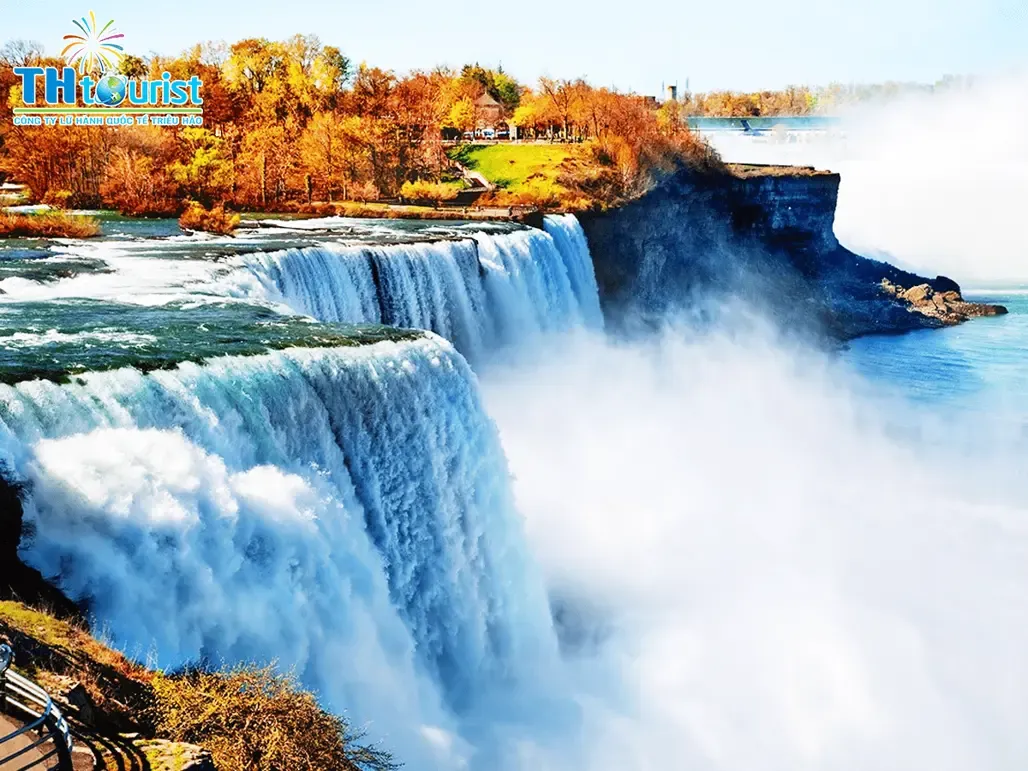Autumn in America adorns itself in vibrant golden hues, captivating every nature and photography enthusiast. If you are a photographer passionate about exploring the wilderness, then Oregon’s autumn forests are an unmissable destination. This place not only boasts stunning natural scenery but is also a haven for wildlife, promising unique and memorable photography experiences.
Oregon – The State of Vast Forests and Biodiversity
Oregon, a state located in the Pacific Northwest region of the United States, is renowned for its pristine and diverse natural beauty. From the rugged Pacific coastline and the majestic volcanoes of the Cascade Range to the vast high desert plateaus and, especially, the endless stretches of lush green forests. This diverse topography and climate have created a rich ecosystem, making Oregon a common home for countless rare flora and fauna.
Among these, Oregon’s forests occupy a significant area, covering nearly half of the state’s land. These forests not only play a crucial role in regulating the climate and protecting water resources but are also an ideal habitat for many wildlife species. When autumn arrives, as maple, oak, and countless forest trees simultaneously change color, Oregon dons a magnificent cloak, transforming the already beautiful forests into even more magical and enchanting places.
Exploring Ideal Forests for Wildlife Photography in Oregon
To have a complete wildlife photography experience in Oregon, you can choose from one of the following famous forests:
Siuslaw National Forest
Siuslaw National Forest stretches along the Oregon coast, offering a unique combination of forest and ocean landscapes. It is famous for its temperate rainforests, where giant Sitka spruce and Western hemlock trees reach high into the sea breeze. In autumn, Siuslaw becomes vibrant with the yellow and orange hues of maple leaves and coastal shrubs.

Siuslaw is a habitat for various wildlife, including Columbia black-tailed deer, black bears, bobcats, and especially diverse seabirds. The coastal area is ideal for observing migratory birds in the fall. If you are lucky, you might spot gray whale migrations along the Pacific coast.
Photography Tips at Siuslaw:
- Time: Autumn (late September to early November) is the best time to admire the fall colors and observe wildlife. Sunrise and sunset are the times with the most beautiful light for photography.
- Location: Cape Perpetua Scenic Area, Oregon Dunes National Recreation Area, and Heceta Head Lighthouse State Scenic Viewpoint are prominent destinations in Siuslaw Forest, offering both beautiful scenery and abundant wildlife.
- Equipment: A telephoto zoom lens of 200mm or longer will be very useful for photographing wildlife from a distance. Don’t forget to bring a tripod to ensure sharp images in low light conditions in the forest.
Willamette National Forest
Located deep inland in Oregon, Willamette National Forest is famous for its old-growth forests, majestic waterfalls, and towering mountains. Willamette is part of the Cascade Range, with diverse terrain ranging from high mountains to river valleys. The forest here is mainly mixed forest, with many coniferous and deciduous trees, creating a colorful autumn picture when fall arrives.

Willamette is home to many wildlife species typical of the Cascade Mountains, such as Roosevelt elk, mule deer, mountain goats, black bears, and many birds of prey. The rivers and lakes in the forest are also habitats for river otters, beavers, and freshwater fish.
Photography Tips at Willamette:
- Time: Autumn in Willamette usually comes later than in Siuslaw, around mid-October to mid-November. Monitor the weather forecast and fall foliage conditions to choose the best time.
- Location: McKenzie River Trail, Waldo Lake Wilderness, and Three Sisters Wilderness are popular destinations in Willamette Forest, providing many opportunities for landscape and wildlife photography.
- Safety: Willamette Forest has rugged terrain and many large wild animals. Always travel in groups, bring a map, compass, or GPS, and inform relatives of your itinerary. It is advisable to carry pepper spray for self-defense in case of encountering bears.
Crater Lake National Park
Although famous for the deep blue Crater Lake, Crater Lake National Park also boasts beautiful forests surrounding the ancient volcanic caldera. The forests in Crater Lake are mainly pine and fir forests, with some areas of birch and broadleaf maple trees. In autumn, these forests turn yellow and orange, creating a stunning contrast with the deep blue of Crater Lake.

Crater Lake is home to many wildlife species, including mule deer, black bears, red foxes, martens, and birds such as bald eagles, great horned owls, and woodpeckers. The lakeside and streams are ideal places to observe waterfowl and small animals.
Photography Tips at Crater Lake:
- Time: Autumn at Crater Lake is usually short and early, around late September to mid-October. The weather in the high mountains can change rapidly, so prepare warm and waterproof clothing.
- Location: Around Rim Village, Rim Drive, and hiking trails like Cleetwood Cove Trail and Discovery Point Trail are great destinations for sightseeing and photography at Crater Lake.
- Note: Crater Lake is a popular tourist destination, especially in the fall. Arrive early to avoid crowds and find the best photo spots.
Preparing for a Wildlife Photography Trip in Oregon Forests
To ensure your wildlife photography trip in Oregon forests is smooth and successful, you need thorough preparation:
- Research the location thoroughly: Learn about the forest you plan to visit, including terrain, weather, common wildlife species, and area regulations.
- Create a detailed plan: Develop a specific itinerary, including travel time, camping locations (if any), hiking trails, and wildlife viewing spots.
- Prepare photography equipment: DSLR or mirrorless camera, telephoto zoom lens (200mm or longer), wide-angle lens (for landscape photography), tripod, spare memory cards, spare batteries, waterproof camera bag.
- Appropriate clothing: Warm, waterproof clothing, hiking boots, hat, gloves, sunglasses, sunscreen, insect repellent.
- Personal items: Drinking water, snacks, map, compass or GPS, flashlight, multi-tool knife, first-aid kit, forest permit (if required).
- Knowledge and skills: Learn about basic survival skills in the forest, how to identify and avoid dangerous animals, navigation skills, and how to use a map, compass, or GPS.
Important Notes for Wildlife Photography
- Respect nature: Do not litter, do not make noise that affects wildlife, do not damage trees and the natural environment.
- Maintain a safe distance from wildlife: Do not approach too closely, do not feed animals, do not disturb or threaten them.
- Comply with area regulations: Read and comply with the regulations of the forest, national park, or reserve, including regulations on fires, camping, travel, and hunting (if any).
- Safety first: Always prioritize safety, do not take risks, do not go into the deep forest alone, always carry communication equipment, and inform relatives of your itinerary.
Conclusion
Experiencing wildlife photography in Oregon’s autumn forests is a wonderful journey, combining a passion for photography and a love for nature. With careful preparation and a spirit of exploration, you will have the opportunity to capture unique and memorable moments of the beautiful autumn scenery and the rich wildlife of Oregon. Come and feel the pristine, enchanting beauty of Oregon’s forests, and let your photos tell a story about the magical harmony between humans and nature.